Whether you are constructing a new house or just want a modern pop of color in your room, painting can be tough especially when you don’t have prior experience. Applying multiple coats is one of the best practices if you want the paint to last. The question is, how long should you wait before adding that next coat of paint?
It usually takes 30-90 minutes for the first coat of paint to dry. Once it is dried, wait at least 8-12 hours in between coats of water-based, and latex paint. If you are using oil-based paint and primer, it may take you longer up to 24 hours of waiting. Waiting longer is even better!
Now that you have an idea of how long you should wait before adding second coats, it might be helpful to talk more about the different types of paint and other painting techniques. This will guide you in your painting projects and avoid unnecessary errors in the future.
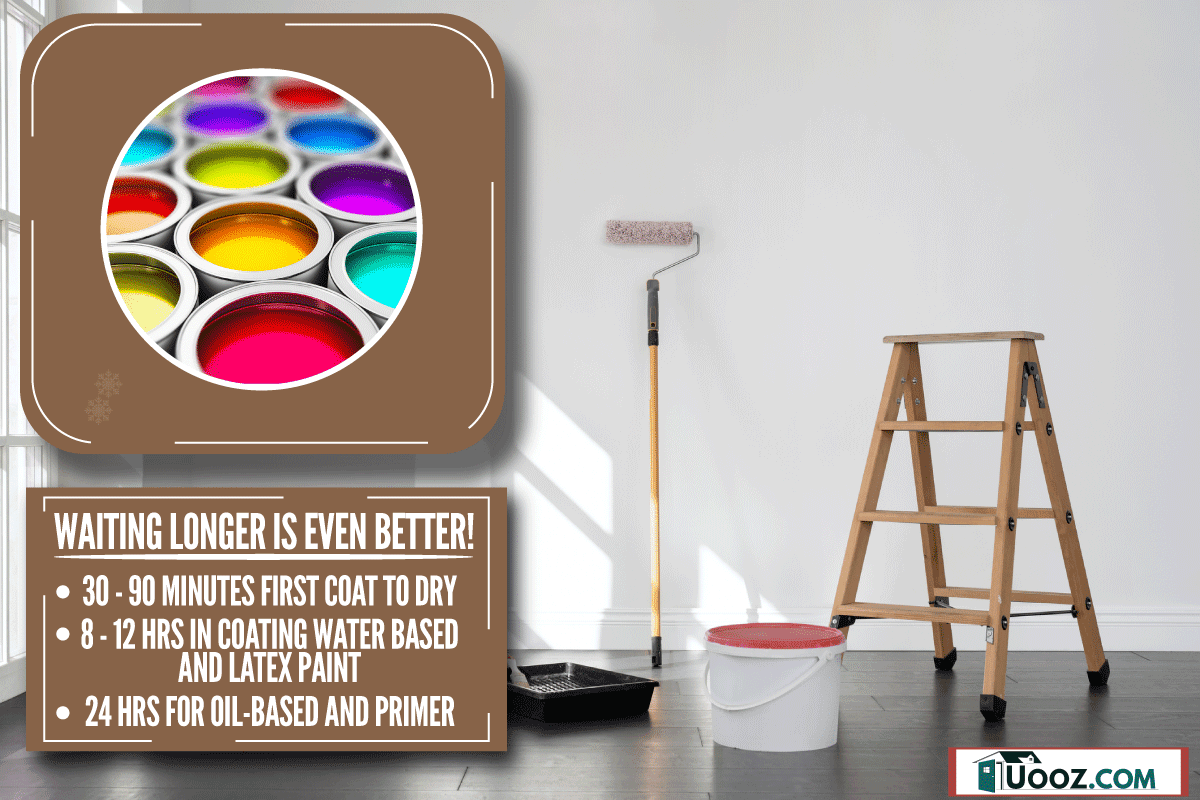
Types of Paint
There is a wide range of paints you can choose from depending on the type of material you are working with and the specific project you are attempting. Let’s break it down into 2 main types: water-based, and oil-based
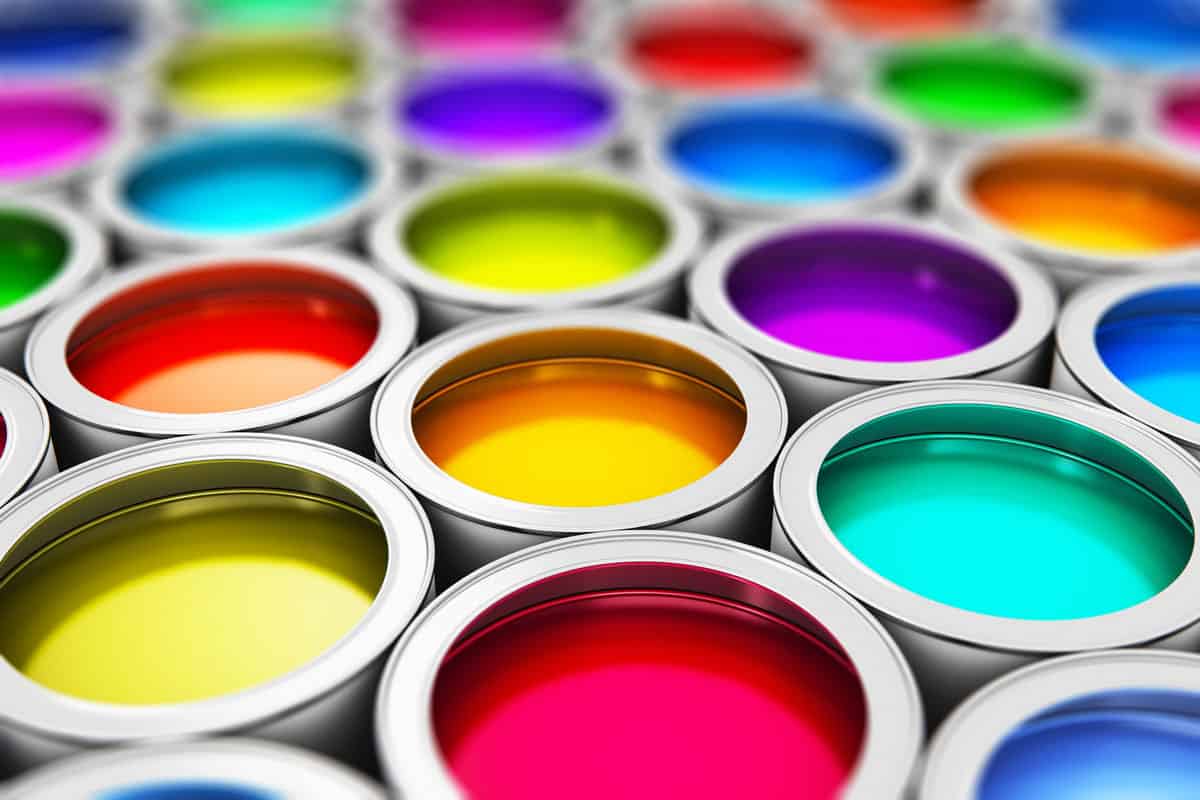
Oil Based Paint
You may have already heard about oil-based paints as these are the most popular choice for professionals and construction companies. They are water resistant and known to be long-lasting and durable. Ideal for bare wood surfaces such as windows and doors, they give a clean and sleek finish to any furniture.
However, studies show that oil-based paints contain high levels of volatile organic compound (VOC) which is toxic when inhaled. They are also reported to cause allergic reactions, rapid heartbeat, and gastrointestinal issues. Thus, you may need to be a little more careful when handling this type of paint.
How to Control VOC Fumes from Oil-based Paints
It usually takes about two to three days before the fumes completely go away. During this time, it is best to stay away from the area or leave the newly painted furniture outside. It is also a good practice to run fans while painting and have plenty of ventilation in the room to allow circulation of fresh air.
If you have some baking soda, place them in bowls and leave them around the room overnight to absorb the odor. Refill the bowls if there are lingering odors. You can also do this trick using water and lemon slices.
Water Based Paint
Much like what the name suggests, water-based paints use water to carry the pigment and binder of paint. Thus, they dry much quicker and are easier to apply. This is perfect for those who are just starting with painting and DIYers. It is commonly used on walls and ceilings since they are less toxic, so you won’t have to worry about the health hazards that accompany oil-based paints.
This type of paint works very well with surfaces that were previously painted with latex. However, using water-based paint on bare metals is a big no because this will surely lead to rusting.
Techniques And Methods Of Painting
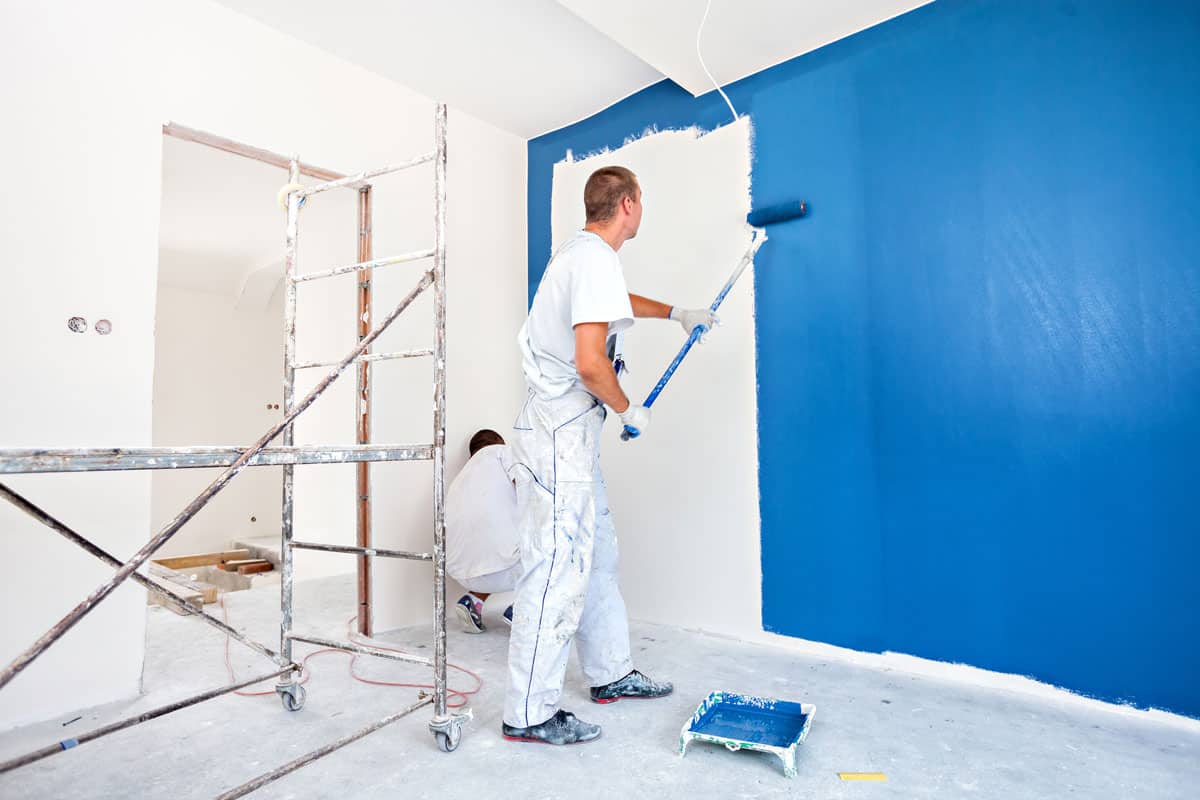
Now that you have selected the type of paint for your passion project, let’s move on to painting techniques that might help you achieve the renovated look for your room. Not everyone was born with hands like Picasso so here are some tips that may help you along the way.
Second Coating
If you are saving some bucks and the only goal is to cover the walls with paint, why would you choose to apply a second coat? This is one of the most common misconceptions. Applying a second coat saves you a lot of time and money in the long term as it ensures the durability of your paint and avoids chipping and fading.
How to Apply the Second Coating
A good rule of thumb is to wait for about three hours for water-based paints and to wait a full 24 hours for oil-based paints. If you have spare time and can wait for a little longer, do so to ensure the first coat has settled and dried out completely before adding a layer. Use your fingers to check whether the walls are dry to touch and make sure you don’t miss a spot!
If you apply the coat too soon, it may result in streaks, peeling, uneven color, and may appear flaky when dry. This can destroy the whole project and will haunt you for life. Remember to always check the label and painting guide on the paint containers and use it for reference.
How Many Coats of Paint Do I Need When Painting?
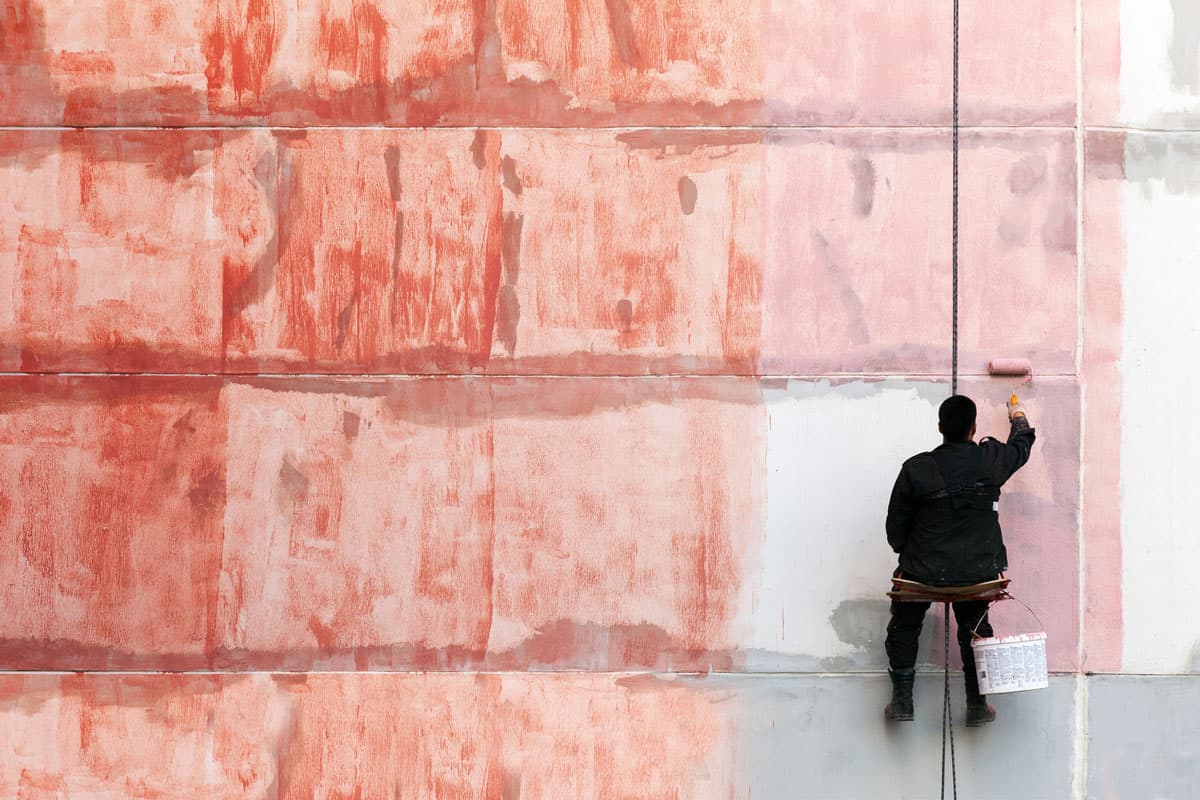
Oftentimes, two coats of paint are enough to have a durable painting. But this may change depending on the color and quality of paint that you use. Higher quality paints have better pigments and fewer solvents which makes them thicker. Using a primer can help your paint last longer so let it dry first before coating it with any paint.
Interior Surfaces
On new drywall, apply two coats of paint after the primer. If you are only repainting, one coat of the same paint color and quality would be enough. For the ceiling, use only the best quality paint to avoid problems in the future. You only need one coat of paint after using a primer for this one.
Exterior Surfaces
Since exterior surfaces are more exposed to sunlight, birds, dust, and lots of other elements, you need to apply at least two coats of paint. Applying multiple coats will help your paint last longer and cost you less money in the long run.
Use the Right Painting Tools
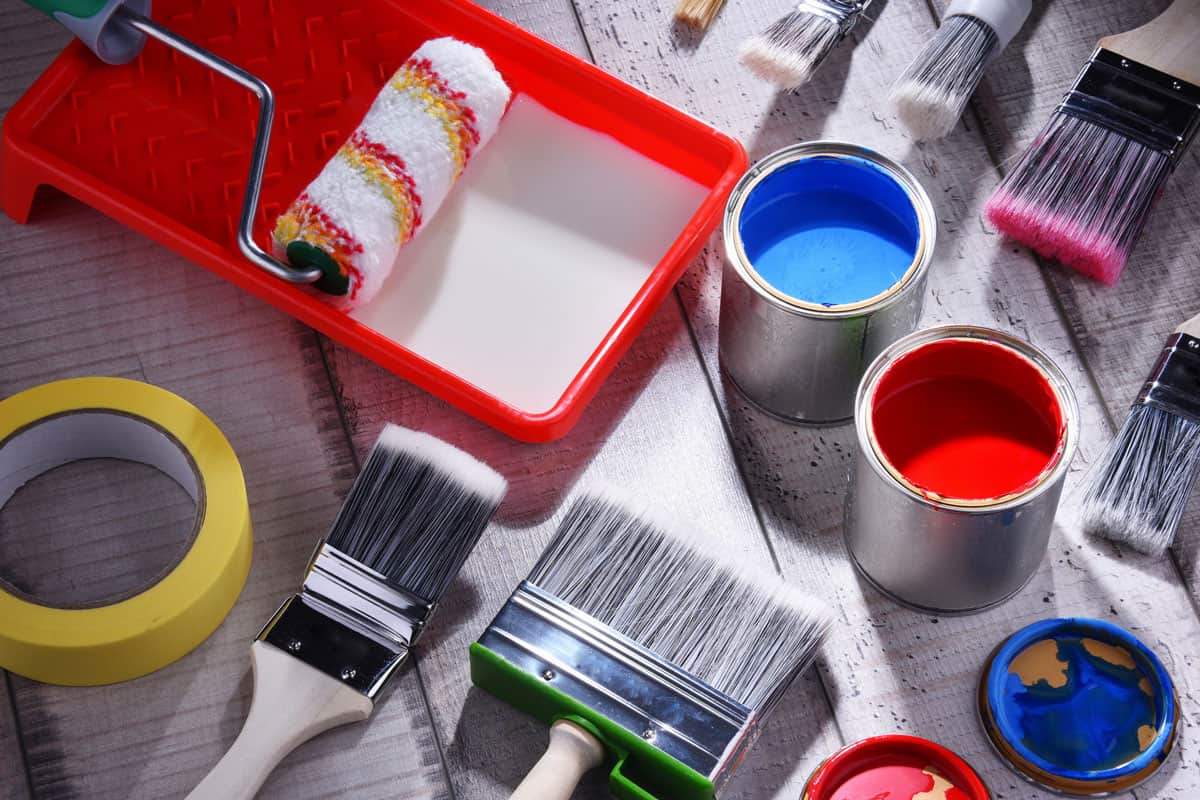
The thickness in the application of your paint affects its drying time. Using a paint roller helps you apply thinner coats compared to paint brushes. Spray paints don’t apply much so it dries out the fastest. However, you might need more layers of paint coating with spray paints.
Painting Technique
To ensure that you have even layers of paint, apply the second coat on the same pattern as the first one. Experts suggest cutting the edges first using your paintbrush. Then, use the paint rollers to paint the walls in large W.
Check out this TOURACE Paint Roller Set on Amazon.
Sanding
Sanding between coats of paint will smoothen out the surface and hide imperfections. It also helps proper bonding between coats. However, it is only suggested for water-based paints. Just wait for the paint to completely dry before sanding it. Use fine sandpaper with 220 grits for a smoother and finer surface.
Check out this Dura-Gold Premium Sandpaper on Amazon.
Color Consistency
Dark-colored paints contain heavier pigments that settle at the bottom. Make sure to stir the paint occasionally, to have even colors every time. Heavier pigments also mean a longer drying time so you need to be patient when using dark paints.
Factors That Affect Drying Time
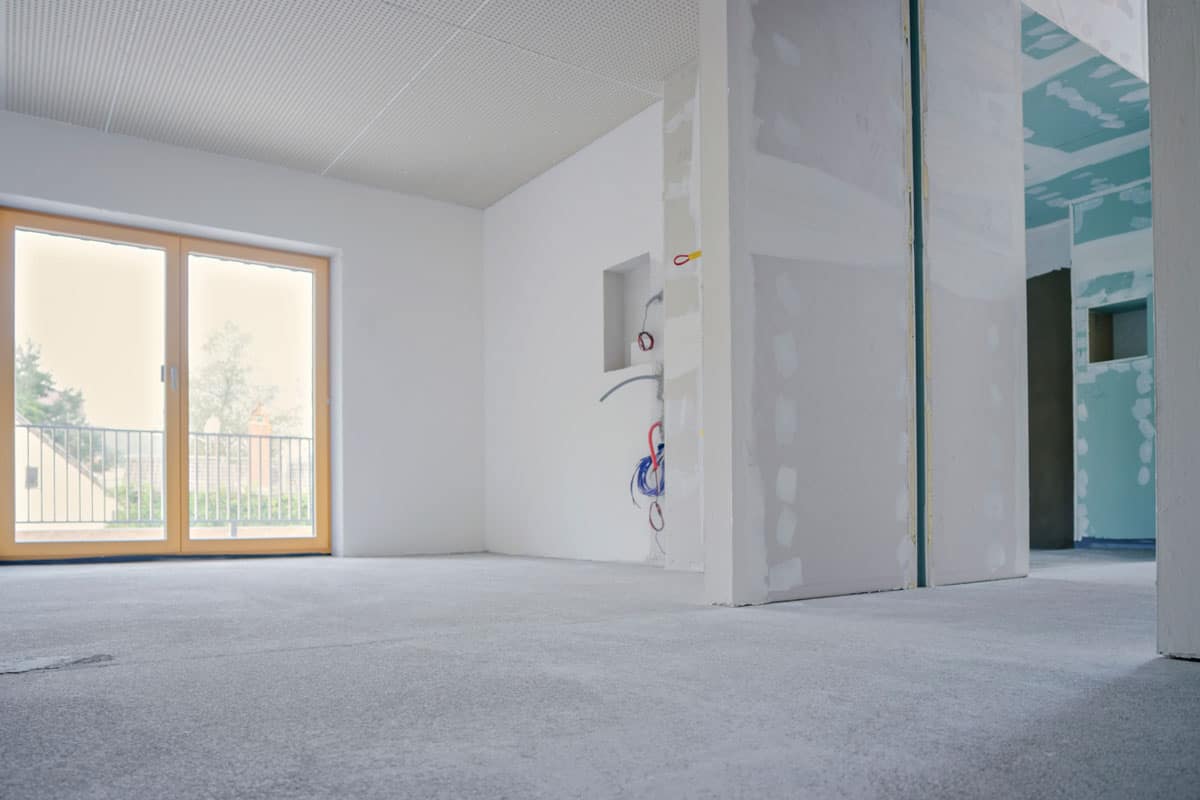
There might be instances where your paints take longer to dry. To hasten the drying time, you can adjust the room conditions such as temperature, ventilation, and humidity.
Temperature
Temperatures have a great impact on the drying time of any type of paint. Both extreme cold in the winter and heat in the summer can significantly extend the drying time. The best condition is a warm room with less humidity. Use a fan when it’s hot and a heater when it’s cold to balance to save you some drying time.
Ventilation
As with any wet material, airflow is crucial to dry the paint quickly. If you have poor ventilation, expect a longer drying time. Letting some fresh air into the room can already have a positive impact on the whole drying process.
Humidity
The paint will take longer to dry in a humid room. The high level of moisture prevents the paint to stick to the walls. It would be a great idea to get a dehumidifier when you plan on having large painting projects.
In Conclusion
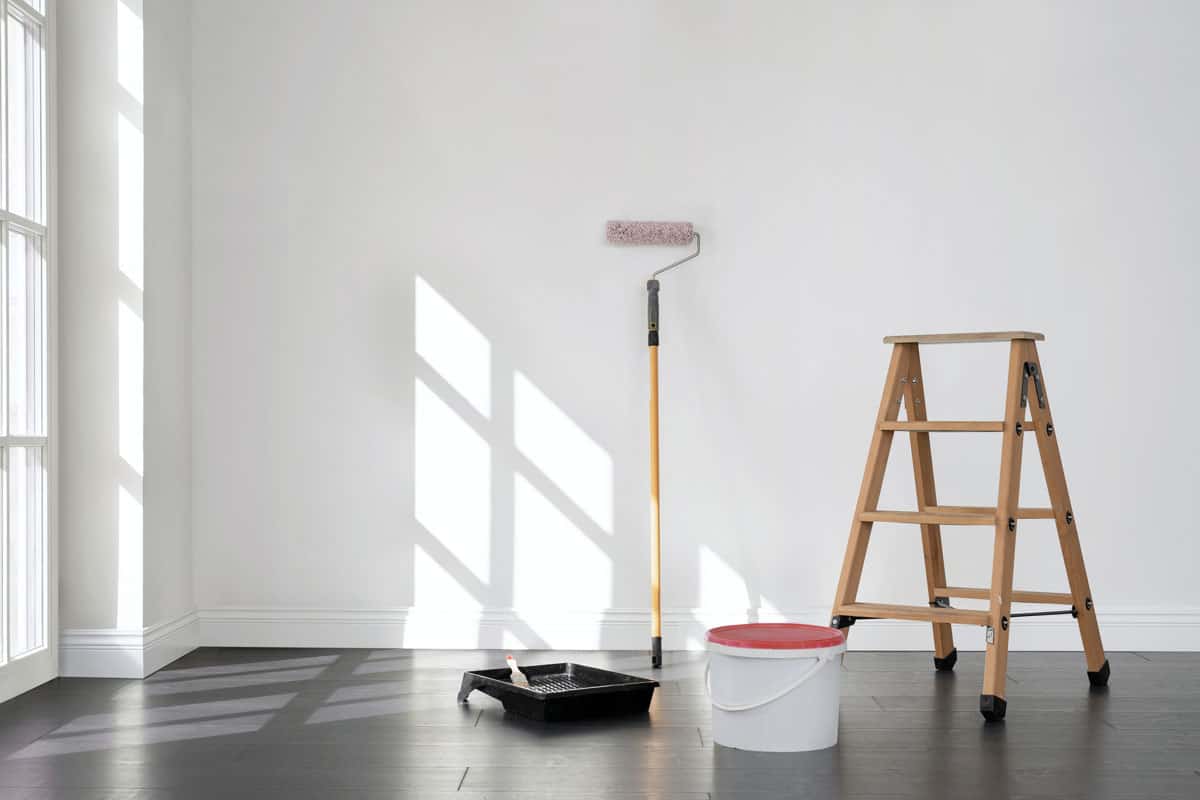
Painting is a fun activity that can transform any wall, room, and furniture. However, you need to take note of when and how to apply the second coat. This will endure the durability of the paint and if done correctly, will save you time and money in the long run. Applying too soon can destroy the whole project while waiting too long will waste lots of your time.
If you find that it takes a long for your paint to dry, you can also adjust the temperature, ventilation, and humidity to speed up the process. Be aware of the health hazards of oil-based paints and ensure proper handling of the product to avoid unsafe incidents.
If you found this post insightful, be sure to also check out some of our other posts:
How To Install Range Hood On Vaulted Ceiling?


